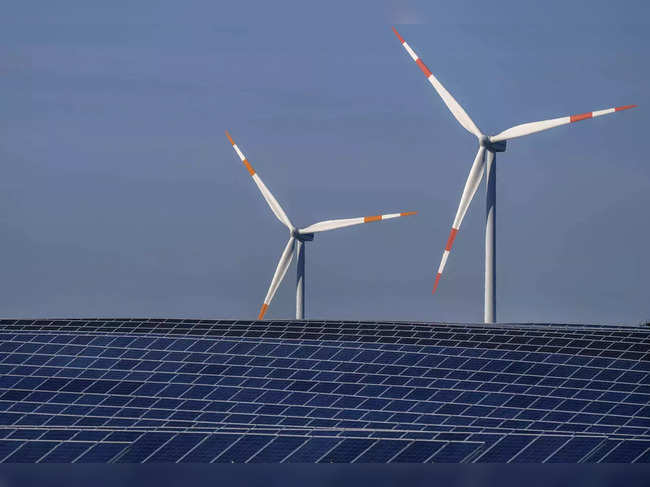 Agencies
AgenciesIndia’s global leadership and domestic actions in driving solutions for sustainable economic development through clean energy technologies hold promise for many countries, particularly in the Global South. The recently launched LiFE (Lifestyle for Environment) mission infuses hope and ambition for the world to collectively build resilient, clean energy supply chains. The upcoming Union Budget presents a perfect opportunity for India to showcase its efforts in building a circular economy for renewable energy.
Opportunity
India has already set the ball rolling by approving two production-linked incentive (PLI) schemes for establishing domestic manufacturing of key energy transition technologies. These include setting up production facilities for 75 gigawatt (GW) of partially and fully integrated solar photovoltaic modules and 50 GW-hour (GWh) of battery manufacturing.
However, achieving the speed and scale of India’s clean energy ambition requires access to key minerals, many of which are concentrated within select geographies. India does not have any proven reserves of lithium, cobalt, nickel, and rare earth elements. A Council on Energy, Environment and Water (CEEW) analysis suggests a mineral requirement of about 2,300 to 4,600 tonnes to manufacture 1 GWh of lithium-ion battery. Globally, the total mineral demand for clean energy technologies is estimated to increase four times by 2040 from 2020 levels, to meet the goals of the Paris Agreement.
A circular economy could solve the problems associated with mineral criticality and supply chain vulnerability. Some strategies include reducing mineral intensity, extending the use of components and products, recovering materials from waste, and recycling and reusing them. Between 2009 and 2020, the solar industry successfully reduced the content of silver, the costliest material in solar cells, from 400 to 100 mg per cell.
Recovery of minerals from waste, a concept called urban mining, can also help meet future mineral demand. An International Energy Agency analysis suggests that battery reuse and recycling could reduce the primary material demand by 12 per cent in 2040.
Given the strategic importance of minerals and resilience of supply chains, we propose three immediate priorities for the upcoming Budget that can lead India to champion circularity in the clean energy space.
First, facilitate robust implementation of the battery and electronic waste management rules notified by the Ministry of Environment, Forest and Climate Change (MoEFCC). These new rules provide staggered targets for collection, refurbishing, recycling, material recovery, and reuse, promoting a circular economy. As the scope of the rules has expanded considerably to include 85 new categories, the upcoming Budget should increase the fund allocation of the central and state pollution control boards to aid implementation. These funds should be utilised to build institutional capacity, augment domestic recycling and refurbishing facilities, and create a robust monitoring and verification programme.
Second, announce an advanced research development and demonstration (RD&D) programme to develop and test alternate input materials, and suitable technologies and models for efficient collection, extraction, recycling and utilisation of high-value materials and minerals. The programme design and operation must ensure competitive selection of beneficiaries, interlinking of industry and world-class research institutions, and continuous evaluation of impact metrics. Such metrics could include research funds deployed, new companies that emerge, quantum of capital raised by innovators, pilots that lead into government programmes and policies, and technology sharing compacts with other countries in the Global South. The central government can fund the programme for five years, and seek opportunities to attract funds from multilateral and bilateral institutions and other sources of blended finance.
Third, announce a dedicated centre of excellence to spearhead India’s thought leadership, international collaborations and planning and implementation of solutions on circular economy and resource efficiency. This centre may be an autonomous institution of the MoEFCC. Its key functions should include providing technical and implementation assistance to the ministry’s waste management division, anchoring the proposed RD&D programme, creating a network of state-of-the-art research institutions and industry, design and implement skilling and training programmes for planning and implementing institutions, support academia in offering specialised career-oriented courses and setting the right pedagogy. It must also coordinate with other key entities such as the NITI Aayog and ministries governing energy, electronics and information technology, commerce and industry and science and technology to build India’s thought leadership and foster international collaborations.
At this time of rising energy security and affordability concerns, India’s initiatives on circular economy in clean energy will inspire other countries to adopt its G20 resolve, Vasudhaiva Kutumbakam – One Earth, One Family, One Future. Disha Agarwal is a senior programme lead and Akanksha Tyagi is a programme associate at the Council on Energy, Environment and Water (CEEW), an independent, not-for-profit research institution.
Disha Agarwal is a senior programme lead and Akanksha Tyagi is a programme associate at the Council on Energy, Environment and Water (CEEW), an independent, not-for-profit research institution.
Download The Economic Times News App to get Daily Market Updates & Live Business News.
Read More News on
Download The Economic Times News App to get Daily Market Updates & Live Business News.









 Get Unlimited Access to The Economic Times
Get Unlimited Access to The Economic Times
